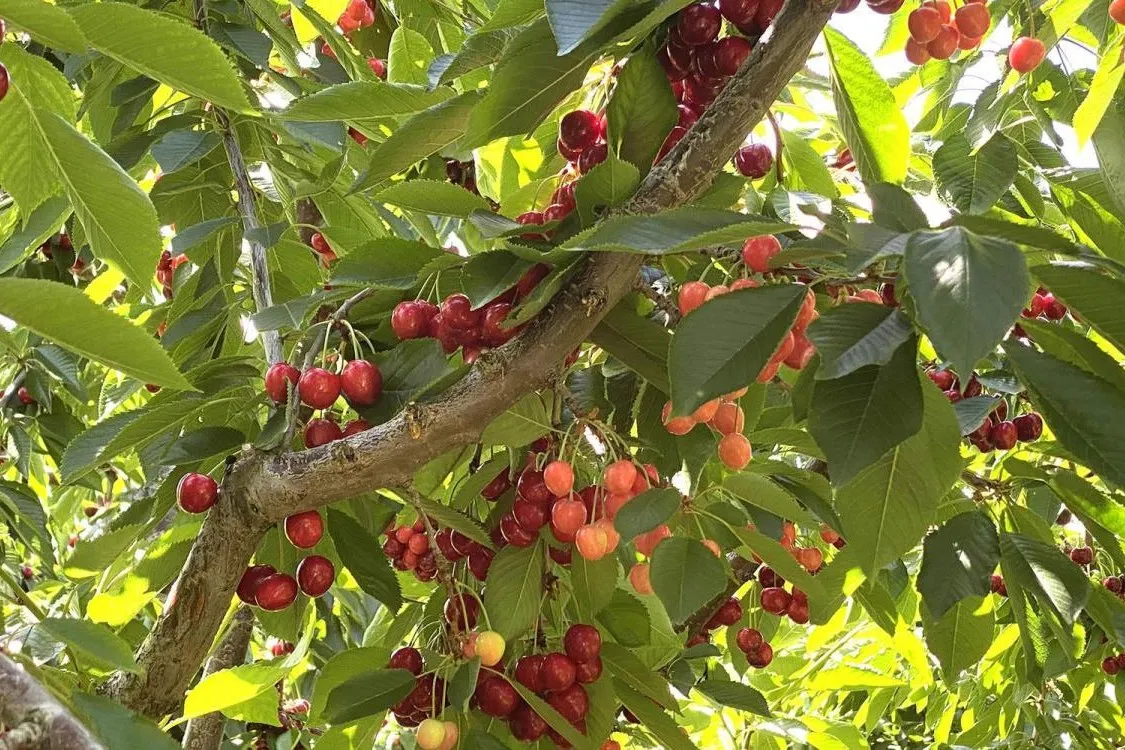Boom of Chinese greenhouse cherries: high demand in Vietnam despite premium prices – here’s what’s behind it
The export of greenhouse-grown cherries from China is gaining traction in Asian markets, thanks to a winning combination of quality, technology, and prices that are more competitive than those from the USA and Australia. But this success comes at a cost.
Despite a retail price in Vietnam exceeding 500,000 dong per kilo (around 20 USD / approximately 18.40 EUR), Chinese greenhouse cherries are gaining ground in international trade. This figure, though double the price of many local fruits, still appeals to Vietnamese consumers—especially when compared to the price of Australian or American cherries, as Chinese cherries cost about 50% less without compromising on quality.
High-tech greenhouses and tailored logistics
Supply, however, remains limited: importers operate with small batches, buying only a few dozen crates at a time and favor air transport to ensure maximum freshness. As of 2025, China’s total cherry cultivation area covers 600,000 hectares, with the main greenhouse hubs in Shandong (Yantai) and Liaoning (Wafangdian) provinces.
In Yantai, greenhouse cherries are sold wholesale at prices ranging from 35 to 55 yuan per kilo (108,000–200,000 dong), depending on size (30–32 mm in diameter). In Wafangdian, during Lunar New Year 2025, premium varieties reached a record price of 130 yuan/kg (around 457,000 dong), thanks to the use of double-layer greenhouses—technology that enables earlier and more consistent ripening.
The county of Linqu in Shandong plays a key role, boasting the largest area dedicated to greenhouse cultivation: 50,000 acres (around 20,234 hectares), accounting for 25% of national production and yielding around 100,000 tons annually.
Rising costs, high margins
Behind this commercial success lies a sharp increase in production costs. In Shandong alone, greenhouse construction costs rose 12% year-on-year, reaching 150,000 yuan per acre (about 21,000 USD/hectare or 19,320 EUR/hectare). In Wafangdian, costs go up to 200,000 yuan, not including the rising expenses for electricity and labor.
In Linqu, daily wages for farm workers have increased by 40% since 2020, now reaching 200 yuan per day. It's a significant investment, but one that can yield attractive returns—especially in markets where fresh off-season cherries are still hard to come by.
Vietnam: a key market
Vietnam is currently a strategic market. Local consumers show strong interest in “natural” products, free from chemical stimulants, and appreciate the speed of the supply chain: cherries arrive from field to table in just 1–2 days thanks to air freight.
The main bottleneck? The lack of official import channels. Most transactions still take place via informal or hand-carried trade, limiting the potential for structured expansion.
Agricultural tech and niche markets
The Chinese experience with greenhouse cherries proves that investing in advanced agricultural technology can open doors to demanding foreign markets, ensuring high margins. However, without improvements in logistics and streamlined bilateral agreements, growth risks remaining limited to a niche.
For agricultural companies and producers interested in export, this segment represents an ambitious yet highly profitable challenge: it requires expertise, vision, and a strong ability to adapt.
Source: greenhouse
Image source: Yashiro Farm
Cherry Times - All rights reserved












